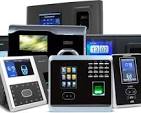Access control
Biometric Time Attendance Solutions
Biometric Time Attendance Solutions
Biometric Time Attendance Solutions In today’s fast-paced business environment, ensuring accuracy and efficiency in managing employee attendance is paramount. Biometric time attendance solutions have emerged as a robust tool to streamline workforce management, offering advanced features that reduce administrative burden and eliminate fraudulent practices. Here, we delve into what biometric attendance solutions are, how they work, and the benefits they bring to organizations.
What Are Biometric Time Attendance Solutions?
Biometric time attendance systems use unique physiological or behavioral characteristics, such as fingerprints, facial recognition, or iris patterns, to identify and verify individuals. These systems replace traditional methods like punch cards, PINs, or manual registers, providing a more secure and reliable way to track attendance.
How Do Biometric Systems Work?
- Enrollment:
- Employees register their biometric data (e.g., fingerprint or facial scan) into the system.
- The data is converted into a digital template and securely stored.
- Verification and Authentication:
- Each time an employee checks in or out, their biometric data is scanned and matched with the stored template.
- The system logs the exact time of entry or exit.
- Data Management:
- Attendance records are automatically updated in the system’s database.
- These records can be integrated with payroll systems for accurate salary calculations.
Key Features of Biometric Time Attendance Systems
- Multiple Biometric Modalities:
- Fingerprint recognition.
- Facial recognition.
- Iris scanning.
- Voice recognition.
- Cloud Integration:
- Data is stored securely on cloud platforms, enabling remote access and real-time updates.
- Customizable Reporting:
- Generate detailed reports on employee attendance, overtime, and absences.
- Scalability:
- Systems can be scaled to accommodate businesses of any size, from small startups to large enterprises.
- Integration Capabilities:
- Compatible with existing HR and payroll software for seamless operations.
Benefits of Using Biometric Attendance Systems
- Enhanced Accuracy:
- Eliminates manual errors and prevents buddy punching (employees clocking in for each other).
- Improved Security:
- Uses unique biometric traits, ensuring only authorized personnel can clock in.
- Increased Productivity:
- Reduces administrative tasks for HR teams, allowing them to focus on strategic initiatives.
- Cost Savings:
- Minimizes payroll errors and prevents time theft, saving money in the long run.
- Real-Time Monitoring:
- Managers can track attendance remotely and address issues promptly.
- Eco-Friendly:
- Paperless system reduces environmental impact.
Applications of Biometric Attendance Solutions
- Corporate Offices:
- Ensures accountability and punctuality among employees.
- Educational Institutions:
- Tracks attendance of students and staff, improving overall discipline.
- Manufacturing Plants:
- Manages large workforces efficiently and ensures compliance with labor laws.
- Healthcare Facilities:
- Monitors shifts and schedules for doctors, nurses, and support staff.
- Retail and Hospitality:
- Tracks part-time and full-time staff attendance to ensure smooth operations.
Challenges and Considerations
- Privacy Concerns:
- Employees may have reservations about sharing biometric data. Clear policies and data protection measures can alleviate these concerns.
- Initial Setup Costs:
- While the initial investment can be significant, the long-term savings justify the expense.
- Environmental Factors:
- Systems need to function effectively in diverse conditions (e.g., dusty environments or varying lighting).
- Data Security:
- It’s essential to ensure robust encryption and compliance with data protection regulations to safeguard biometric information.
Biometric time attendance solutions represent the future of workforce management. By combining advanced technology with user-friendly interfaces, these systems enhance efficiency, accuracy, and security. Organizations adopting these solutions not only streamline their operations but also build a culture of transparency and accountability.
As businesses continue to evolve, biometric systems will play a pivotal role in creating smarter, more connected workplaces.


